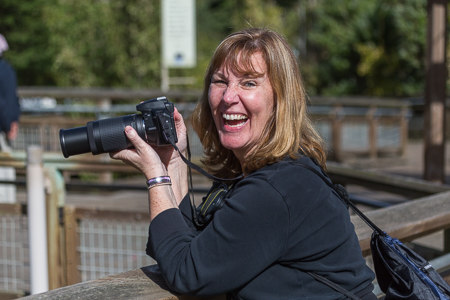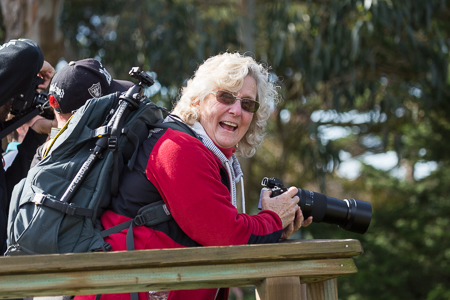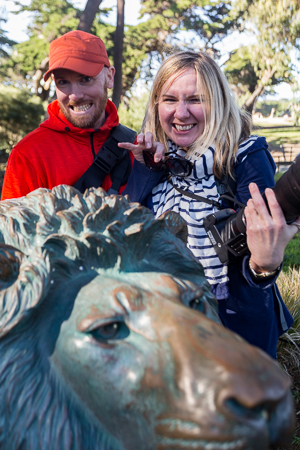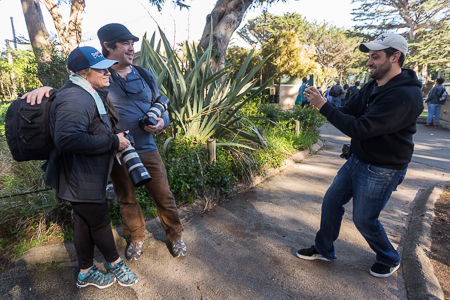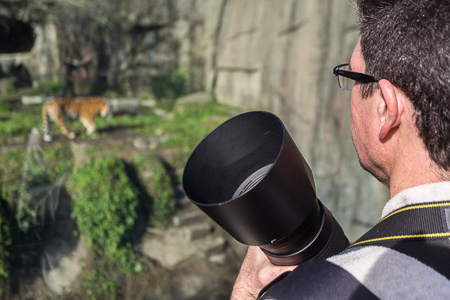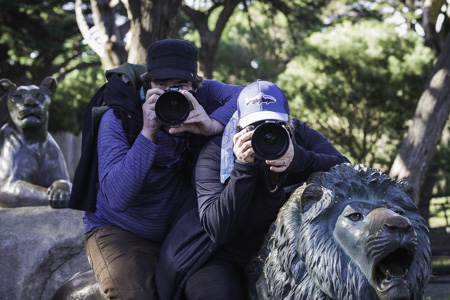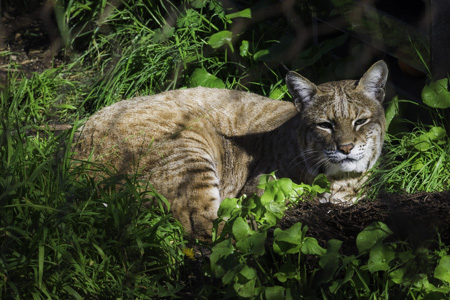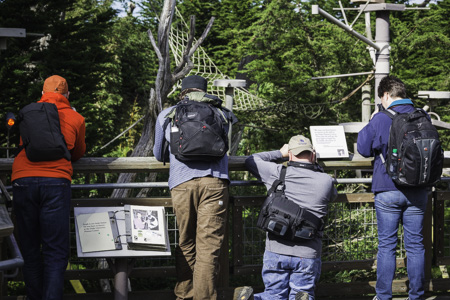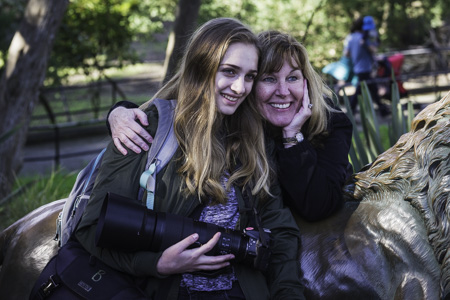
|
|
|||||
Wildlife photography is patently different than many other kinds of photography. One could travel to the same viewpoint, day after day, and the landscape never changes. One could pose a model the same way, day after day, and take nearly the exact same shot. And one can setup a scene so perfect and meticulous, and repeat the photographic process yielding the same results time and time again, But wildlife photography doesnt allow for any of that. The moments are always fleeting, the subjects are often uncooperative, and the light is nearly always fickle. With wildlife photography, the artist is merely a prepared opportunist, simply knowledgeable in the skills and ready for when the perfect shot presents itself.
Those are the challenges with being a wildlife photographer. You have to be prepared, patient, knowledgeable, and ready before that fleeting moment happens, else its lost forever to memory. These are the skills we teach in our intro to wildlife class. Aron Cooperman and I met our class of budding wildlife photographers at a tad more accessible location for our lesson; The San Francisco Zoo. The zoo provides us with a more controlled environment with which to practice our newfound skills. Honing those skills, makes for a better prepared photographer, for when the action happens.
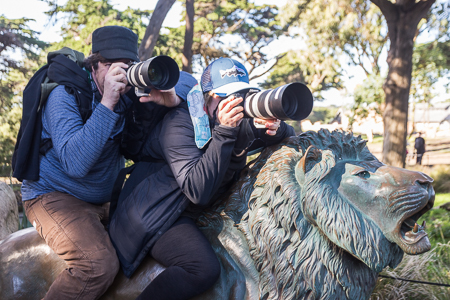 We started by dividing our group into two segments, luckily for Aron and I, there were equal parts Nikon and Canon shooters. So naturally I took the Canon folks, and he took the Nikon folks. We spent the first half hour making sure everyone's camera was properly set for rigors of wildlife photography. We discussed drive modes, focus modes, and metering modes, to let the camera allow us to take quick and accurately exposed shots. We discussed focus points, ISO settings, and correct shutter speeds, to have the camera assist us in taking sharp, accurately focused images. And we also discussed image quality, white balance and picture styles, to give us a better and more editable photos for post production. Once everyone was content in the changes, it was time to start putting their readiness to the test.
We started by dividing our group into two segments, luckily for Aron and I, there were equal parts Nikon and Canon shooters. So naturally I took the Canon folks, and he took the Nikon folks. We spent the first half hour making sure everyone's camera was properly set for rigors of wildlife photography. We discussed drive modes, focus modes, and metering modes, to let the camera allow us to take quick and accurately exposed shots. We discussed focus points, ISO settings, and correct shutter speeds, to have the camera assist us in taking sharp, accurately focused images. And we also discussed image quality, white balance and picture styles, to give us a better and more editable photos for post production. Once everyone was content in the changes, it was time to start putting their readiness to the test.
Being an opportunist is still relevant even in a controlled environment like a zoo. The animals are all still wild, the enclosures don't inhibit there natural tendencies, so opportunity still drives the places in which we stop to photograph. The first on our list is usually the smaller primates like mandrills and patas monkeys. The mandrills are a beautiful primate, with amazing colorful snouts and and human like expressions in their eyes. They happened to be active whilst passing by so we stopped and began working the scene. Aron and I worked with the group on moving around and using the environment to help take better photos. Having twelve sets of eyes to find the best vantage point is never going to happen in the wild, so our first lesson was to move around and use the natural environment to give the best looking angle for the shot. This theme would repeat itself time and time again at the zoo, as the concrete walls are an unsightly distraction for a pure wildlife photo. We moved on to the patas monkeys for a lesson on how to track fast moving subjects and anticipate their behavior. With time, one can learn to predict how certain animals behave in their surroundings and take advantage of being in the right spot when the shot is perfect.
 As we made our way to the big cats, we hit our first roadblock of the day. They were all sleeping in the morning sun. So we would have to wait and come back later, closer to their feeding time when they would up and moving around. We made out way across the zoo and found eagle island an attractive spot to photograph to the eagles walking around. Here was another lesson in finding the right vantage point to best serve the portrait of this magnificent bird. We made our way around the island stopping every so often to try out a different composition. We learned the walking routine of the Mexican grey wolves, and captured them in action, and after that settled into some more contextual shots of a blind sea lion being fed by his handler. It was an amazingly intimate moment between man and animal, and showed the empathy we all shared with these creatures. After a brief stop making friends with a koala, we stopped for lunch.
As we made our way to the big cats, we hit our first roadblock of the day. They were all sleeping in the morning sun. So we would have to wait and come back later, closer to their feeding time when they would up and moving around. We made out way across the zoo and found eagle island an attractive spot to photograph to the eagles walking around. Here was another lesson in finding the right vantage point to best serve the portrait of this magnificent bird. We made our way around the island stopping every so often to try out a different composition. We learned the walking routine of the Mexican grey wolves, and captured them in action, and after that settled into some more contextual shots of a blind sea lion being fed by his handler. It was an amazingly intimate moment between man and animal, and showed the empathy we all shared with these creatures. After a brief stop making friends with a koala, we stopped for lunch.
Once everyone was satisfied, we returned to the hunt, stopping briefly on a catwalk looking over the lemurs for some closeup abstract shots of them nestled in a ball for communal warmth. From there we traveled to Africa, and spent time shooting the patterns on the hides of giraffes and zebras. One of our last stops here was to take in the family environment of the lowland gorillas. The stalwart silver-back was on amazing display and he vamped for our cameras. Gorillas are difficult to photograph because of their dark hair, couple that with the bright sun and you have a huge task to find the right spot to take a photograph without blowing out the background or losing detail in their hair. After a quick group shot where we all tried to unleash our inner beast, we made our way back the big cats section for one last try. We weren't disappointed this time as one of the Sumatran tigers was pacing back and forth. With out long lenses keenly placed, we waited and watched for the perfect moment with which to snap a menacing head-shot of this fearsome and beautiful creature. And with that, our time was done. In five short hours, we traveled the world over capturing many of natures most amazing creations, and making wildlife photographers out of our group! Only left to do now is book a flight to a faraway place and put our skills to the test! Africa anyone?
Until next time,
Scott, Aron and the rest of the Aperture Academy team
If you'd like to join us at one of our workshops, you can find the schedule/sign up here.
|
 |
Other Cool Stuff→ Past Workshop Photos → 72dpi.com → How-To Articles → Photographer of the Month |
 |
Contact Us→ Contact Us → About Us → Site Map |
© 2009-2024 Aperture Academy, Inc.

